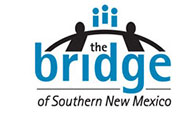New Mexico’s First Early College High School: A New Way of Doing High School and a Stronger Return on Investment for Education Dollars
LAS CRUCES, NM – New Mexico’s first Early College High School illustrates local educators’ willingness to launch innovative approaches to improve graduation rates. It also improves the economic impact of educational dollars when there is a spirit of partnership between education and industry.
Seeds for Early College High School were planted in conversations between business, government, economic development and education leaders seeking to reduce the dropout rate and exploring best practices nationally. Ultimately, those leaders also formed a non-profit to continue the work, The Bridge of Southern New Mexico. The Bridge’s mission is to foster collaboration and leverage resources to increase graduation rates and expand career and technical training opportunities in Doña Ana County.
Through collaboration between the leadership of The Bridge, the Early College High School became a reality, and with it, a better, most cost effective way of educating high school students.
Early College High Schools around the country employ several best practices in education: smaller learning communities; focused, career-applied learning; and mentoring relationships between teachers and students. As a result, the average national graduation rate of these schools is 90%. More importantly, students who complete all four years graduate with both a high school diploma and a two-year college degree – all at no cost to the student. For families who couldn’t otherwise afford college, the Early College High School provides a pathway for future success in the workforce or higher education. Students graduate ready to pursue jobs in the largest category in the job market – middle skills jobs. It’s estimated that half of all jobs in the 21st Century economy require two-year degrees or certifications.
Taxpayers benefit, too – in a big way. The following tables illustrate cost and effectiveness differences between the two models:
| Early College High School | Comprehensive High School |
| $18 million to build | $110 million to build (Dripping Springs) |
| 500 students at capacity | 2,000 students at capacity |
Cost Per Savings: $42 million (16% per student)
| Early College High School | Comprehensive High School |
| 90% graduation rate nationally | 68% graduation rate LCPS |
| $81,600 additional funds realized/year | $4,352,000 additional funds realized/yr |
Additionally, many of the students who enter college take at least one remedial course, because they failed to master a subject in high school. This essentially doubles the costs to taxpayers for the same education. The Early College High School eliminates the need for remedial classes for its graduates.
The Early College High School is the first in New Mexico to take advantage of a financing tool made possible by New Mexico House Bill 33. Rather than spending the $18 million up front to build the school, Las Cruces Public Schools will lease the building for six years, paying only the low four-percent interest rate on the Certificate of Participation (COP) bonds, but there will be no lease payments madeuntil the campus opens in August 2011. In the sixth year, the school will buy out the lease for the principal amount of $18 million, paying off the loan with future bonds.
The Early College High School is just the first sign of The Bridge’s success. In addition to advocating for other industry-directed Early College High Schools, The Bridge is working to advance dual-credit courses for students who are “at risk” of dropping out. It is also working with business to develop “learn and earn” opportunities for students through internships and mentorships.
By leveraging the resources and support of its public and private sector partners, The Bridge seeks to attract even greater resources into the community and create strong partnerships for student success in the county.
The Bridge is distinct in its unique cross-sector leadership, which includes the leaders of each of the county’s educational institutions. The very people discussing effective and innovative solutions are also those in authority to implement them.
“The Bridge is a model for community collaboration for the nation,” said Suzanne Quillen, chairwoman of The Bridge’s board of directors. “This group has invested time and resources over the last three years to challenge traditional thinking and develop pathways to student success today and in the future. We are thrilled to watch these Early College High School students blaze a new trail in New Mexico education and excited to see where their education takes them. ”
To learn more about The Bridge, visit www.thebridgeofsnm.com or call 575-528-7092

